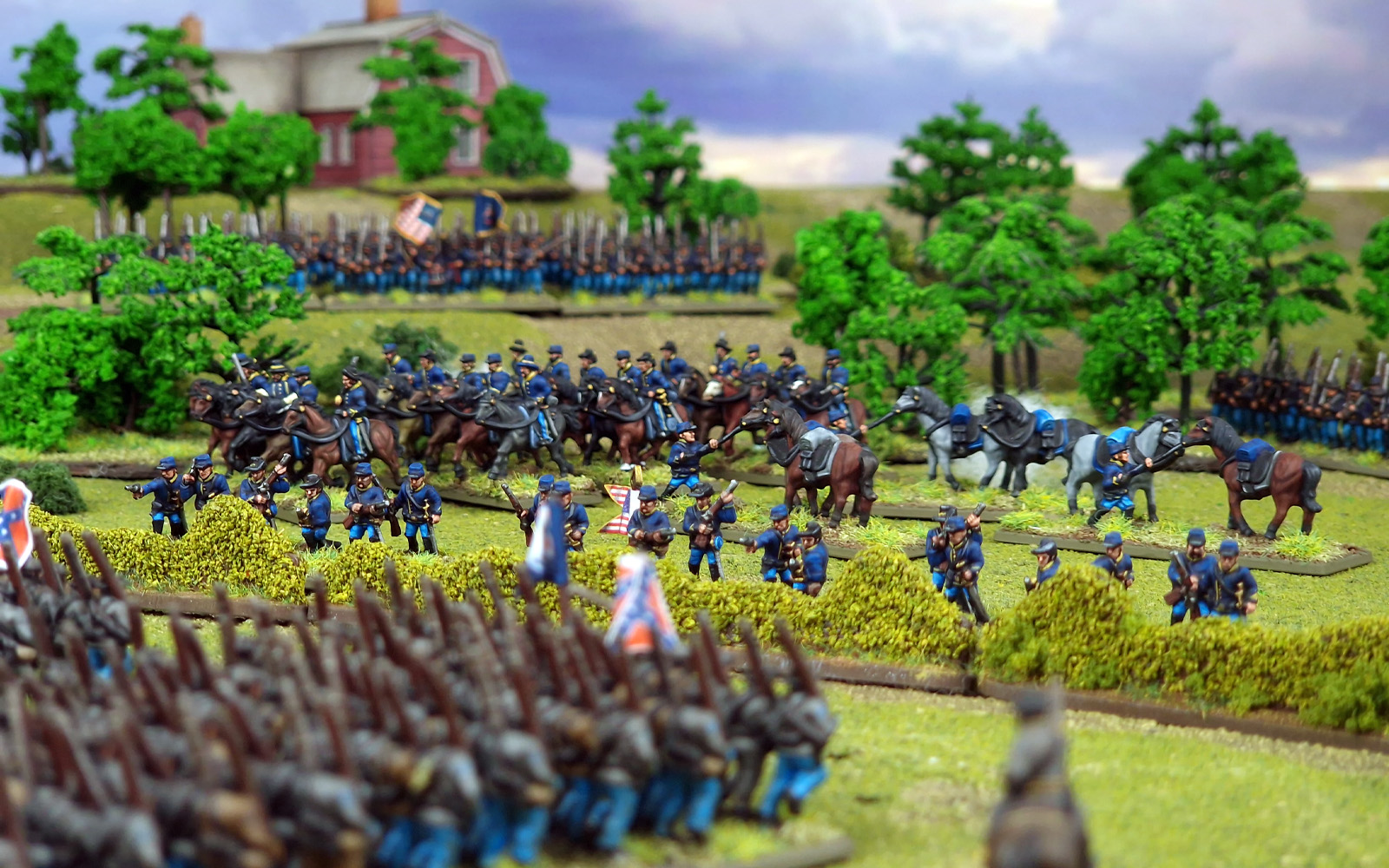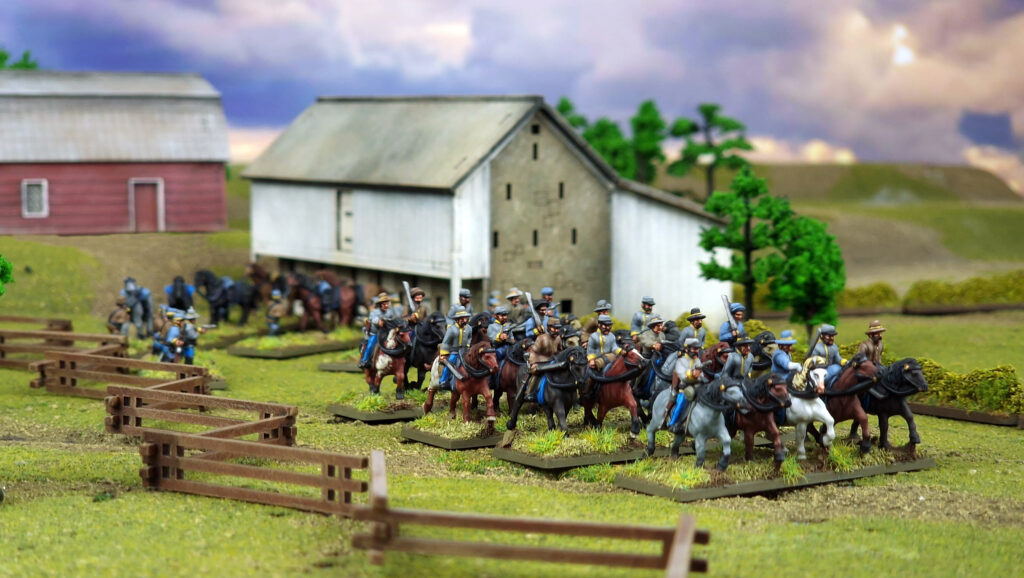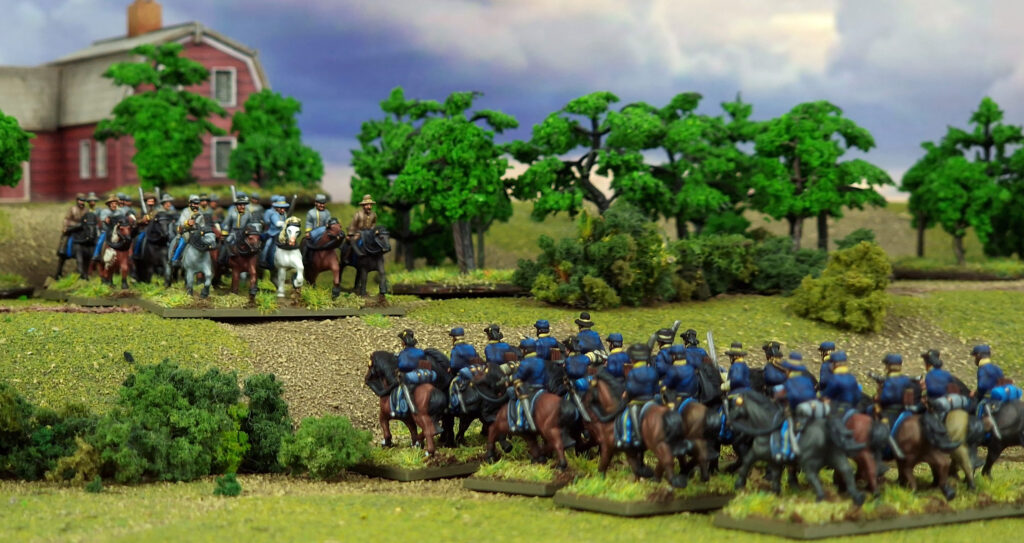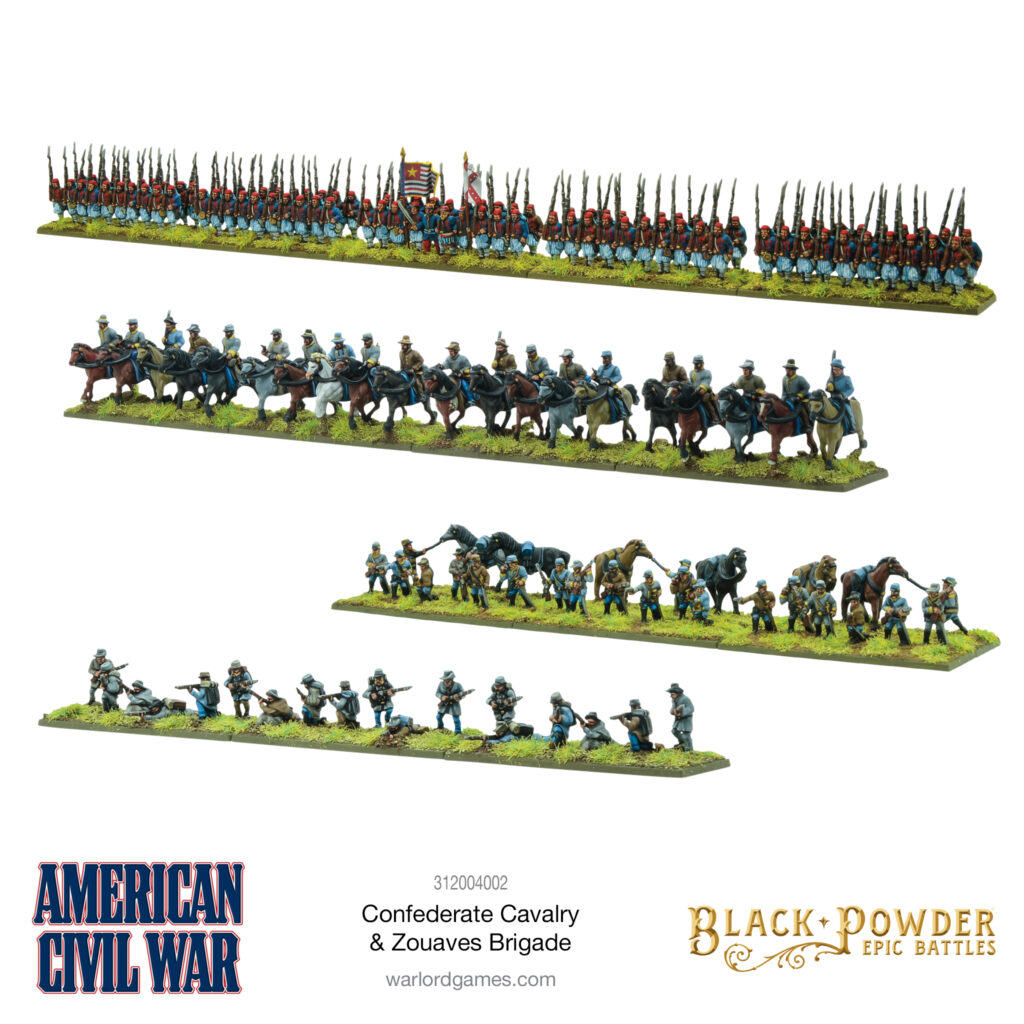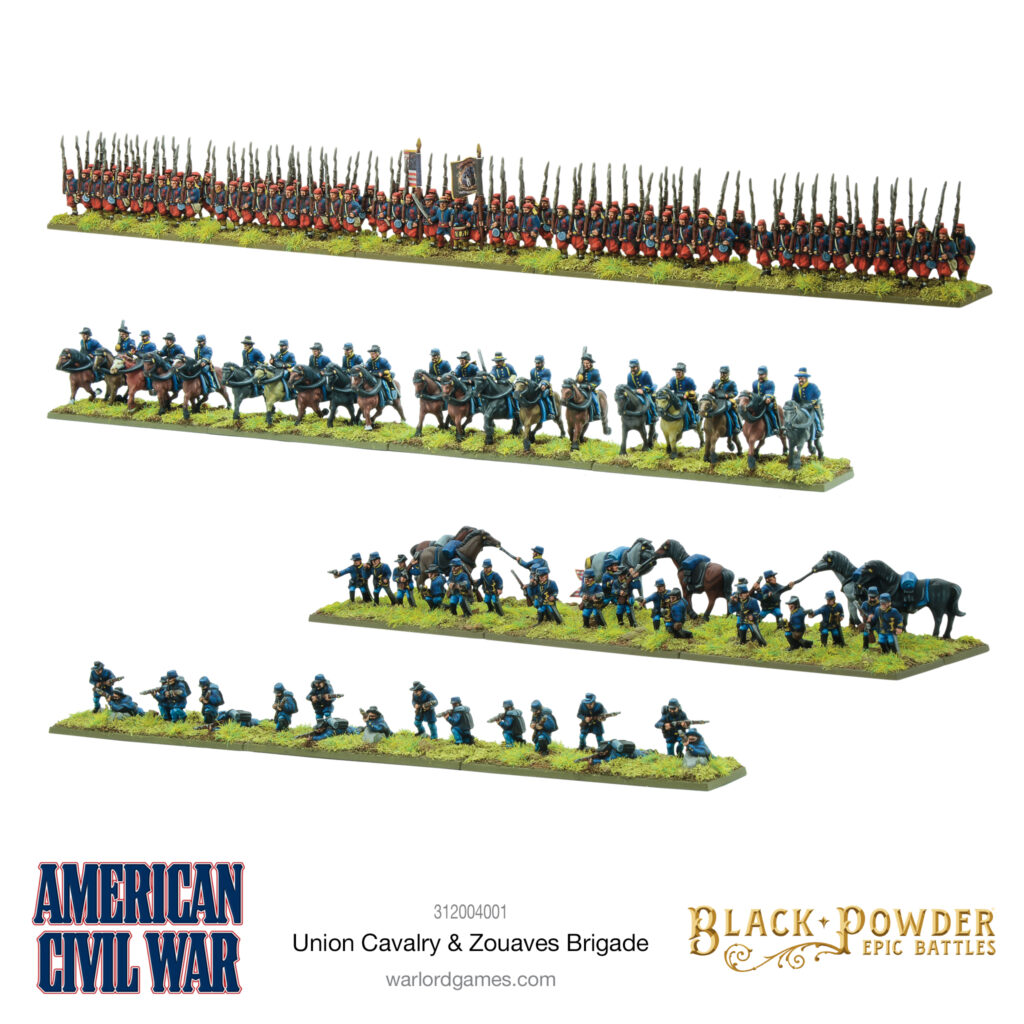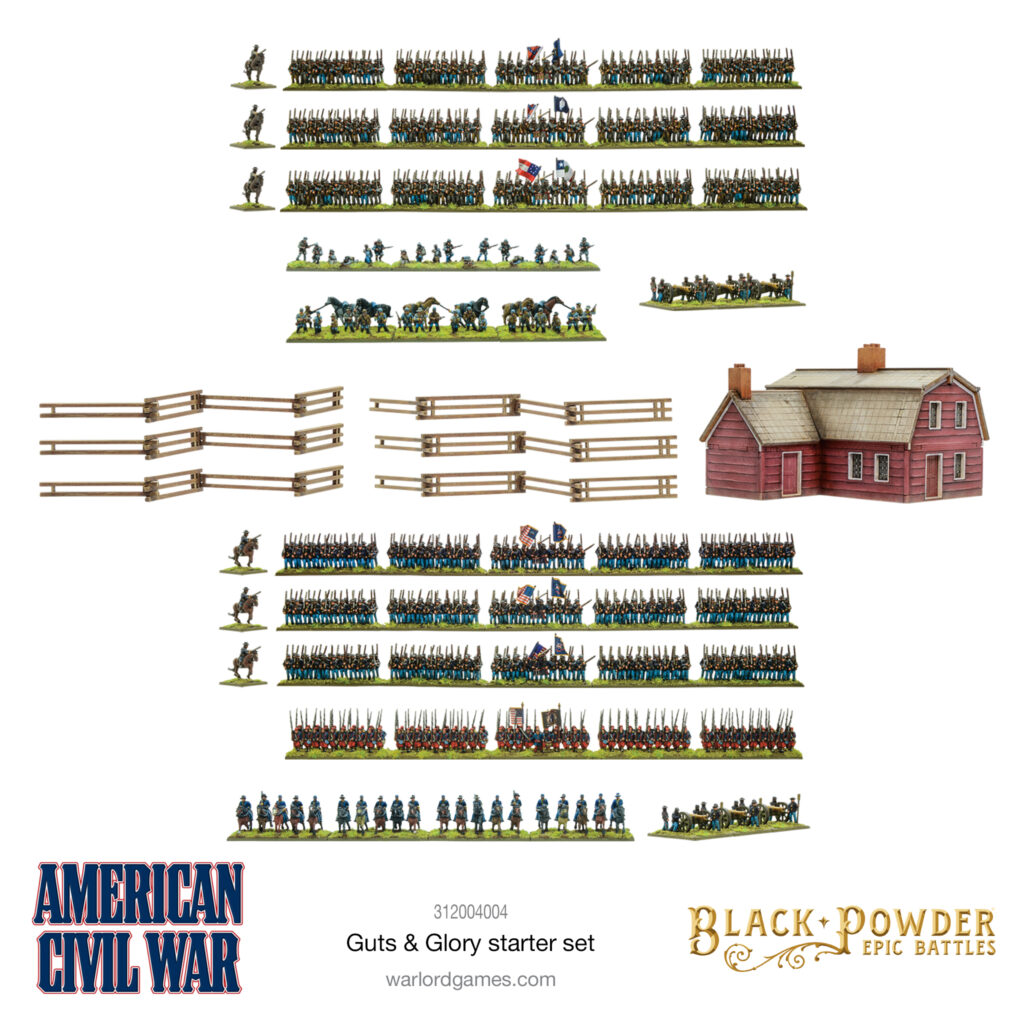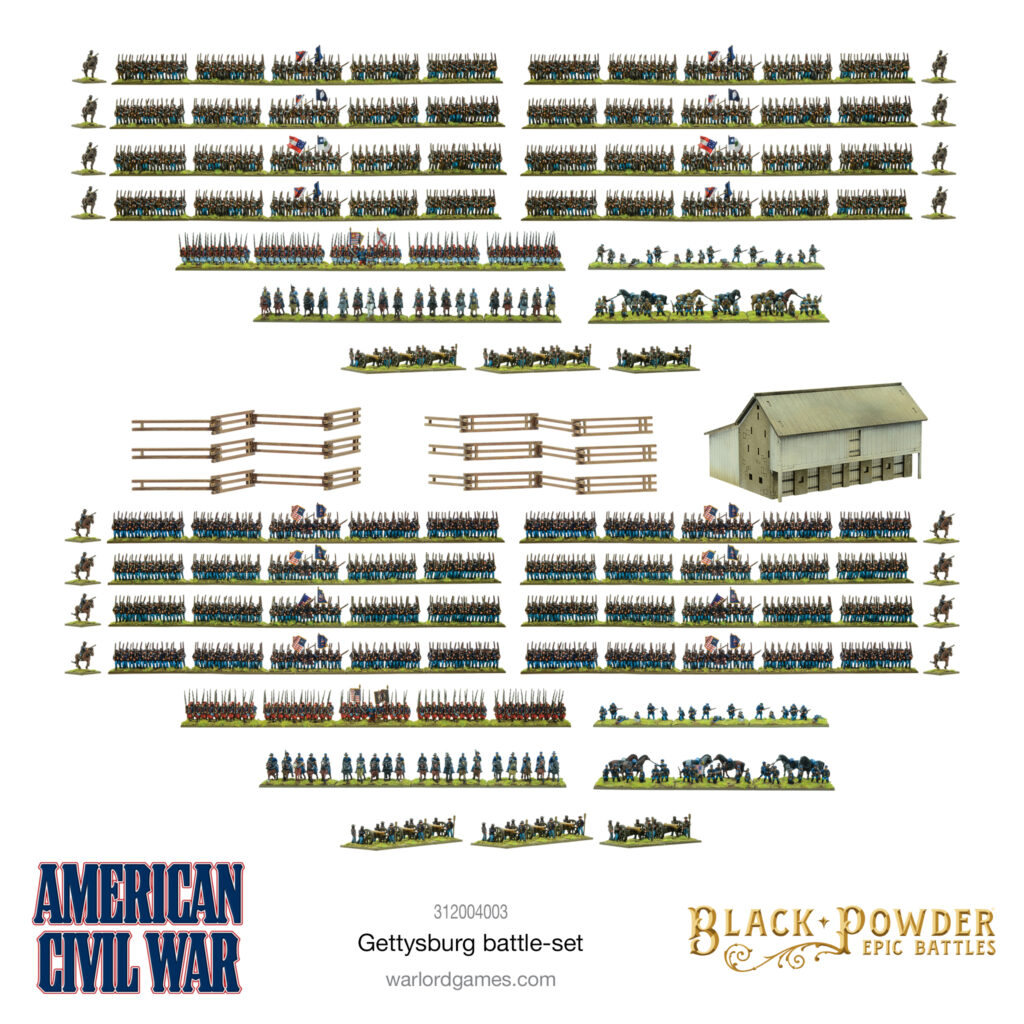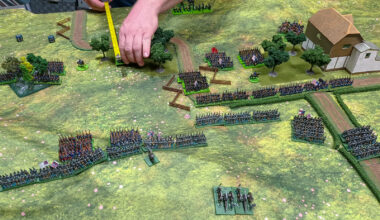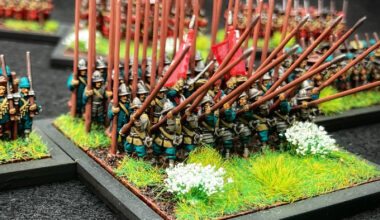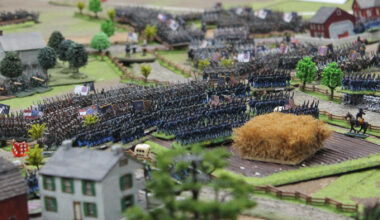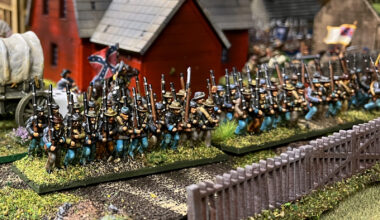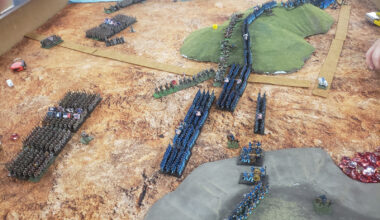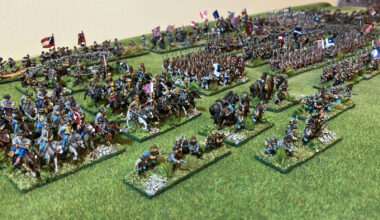The use of cavalry went through a peculiar evolution over the course of the American Civil War. In 1861, as regiments were raised and militias were mustered, relatively few cavalry regiments were raised. This was largely due to the expectation that the war would be short, coupled with the cost associated with a cavalry regiment compared to an infantry regiment, and the much longer time required to train a soldier to ride and care for a horse compared to turning him into a competent infantryman. Therefore, although cavalry regiments were raised throughout the war, it was often the case that they formed an unusually small proportion of the total army when compared to their European cousins. So, whilst in Europe cavalry might still form a quarter to a third of the army, in America, it might be as low as a tenth of an army’s total strength and rarely exceeded a fifth.
The early outings for the mounted arm proved promising – exploits such as Stuart’s charge with his 1st Virginia Cavalry at The First Battle of Manassas demonstrated the dash and élan of some mounted units and set media and public imagination ablaze with images of the glorious charge – particularly in the South.
Sadly, this was not to last. The swiftly evolving technology meant that the very notion of closing with formed (and prepared) infantry or artillery in a headlong charge became almost unthinkable. The sheer firepower an infantry regiment could bring to bear was quickly seen to be sufficient to prevent the cavalry from charging home, thus the sensible trooper saw no benefit to be gained from such a risky venture. As a result, the armies of both sides, and in all theatres, realising what the realities of the new battlefield were, relegated the place of cavalry to that of mounted reconnaissance, scouting and picquet duties.
And so was born the cavalry ‘raid’. This might be little more than a small contingent diving into the enemy’s rear to burn a few supplies, or it would not be uncommon to see an entire cavalry division, or even a corps, dispatched upon some errand of destruction, certainly by the war’s closing stages.
As technology and its uses evolved over the course of the war, the cavalry was similarly changed. With improved weapons and firepower the cavalry finally came into their own as a battlefield arm – not in the form of a mounted breakthrough force, but as a mobile force with high firepower capability much like the dragoons (mounted infantry) of the 16th Century.
Cavalry combined two useful military attributes: mobility and firepower. Though perhaps outranged by an infantry regiment with rifles the cavalry could still dismount to hold ground temporarily until relieved by the infantry. Armed with a carbine a trooper fight on foot perhaps as effectively as his infantry counterpart. In this role, the cavalry would invariably dismount into a skirmish screen, with nominally a quarter of the troopers detailed as horse holders, though some commanders preferred to think of the ‘fourth man’ forming a reserve to be called upon if the line was hard pressed. Commonly a regiment in a brigade might be held in reserve, mounted, whilst the remainder of the brigade fought on foot. Such tactics sat well with the cavalry who saw the mounted charge as risky and perhaps even futile.
There was one enemy, however, that the cavalry would still meet in a head-on charge – other cavalry! The troopers of both sides carried pistols (Confederate cavalrymen often carried more than one) for close or hand-to-hand combat. In addition, sabres were often, though not always, carried.
It was proven to be a tactically fluid time for the mounted troopers of the American Civil War; from having a limited battlefield role the cavalry evolved into a vital component of the army, particularly for the Union. Though perhaps still detached on its own mission it would, towards the war’s end, be able to trade blow for blow with the infantry through firepower and quite willing to deal with the enemy cavalry through pistol and sabre.
To fully represent cavalry of the period in Epic Battles: American Civil War, we’ve made sure to include both mounted and dismounted versions of the cavalry on our plastic sprues, which also includes the brightly coloured zouaves and equally important skirmishing infantry, available in brigade boxes in both Union and Confederate form.
You’ll also find these sprues in the brand new Epic Battles: American Civil War starter set, Guts & Glory, and the gloriously packed battle Set, Gettysburg!
Guts & Glory contains:
- Plastic figures and bases for 6 infantry regiments, 1 Zouave regiment, 1 cavalry regiment, 1 dismounted cavalry regiment, 1 skirmishers regiment, 6 cannon & 6 mounted commanders
- Green plastic bases for all figures
- A5 Black Powder rulebook
- 36-page American Civil War background, scenario and supplemental rule booklet
- Flag sheets for both Union and Confederate forces
- Laser-cut MDF farm building
- Laser-cut MDF Snake fences
- Six D6 dice
Gettysburg contains:
- Union army (blue plastic) – 8 infantry regiments, 1 zouave regiment, 1 cavalry regiment, 1 dismounted cavalry regiment, 1 skirmishers regiment, 8 cannon & 8 mounted commanders
- Confederate army (grey plastic) – 8 infantry regiments, 1 zouave regiment, 1 cavalry regiment, 1 dismounted cavalry regiment, 1 skirmishers regiment, 8 cannon & 8 mounted commanders
- Green plastic bases for all figures
- A5 Black Powder rulebook
- 36-page American Civil War background, scenario and supplemental rule booklet
- Flag sheets for both Union and Confederate forces
- Laser-cut MDF farm building
- Laser-cut MDF Snake fences
- Six D6 dice
